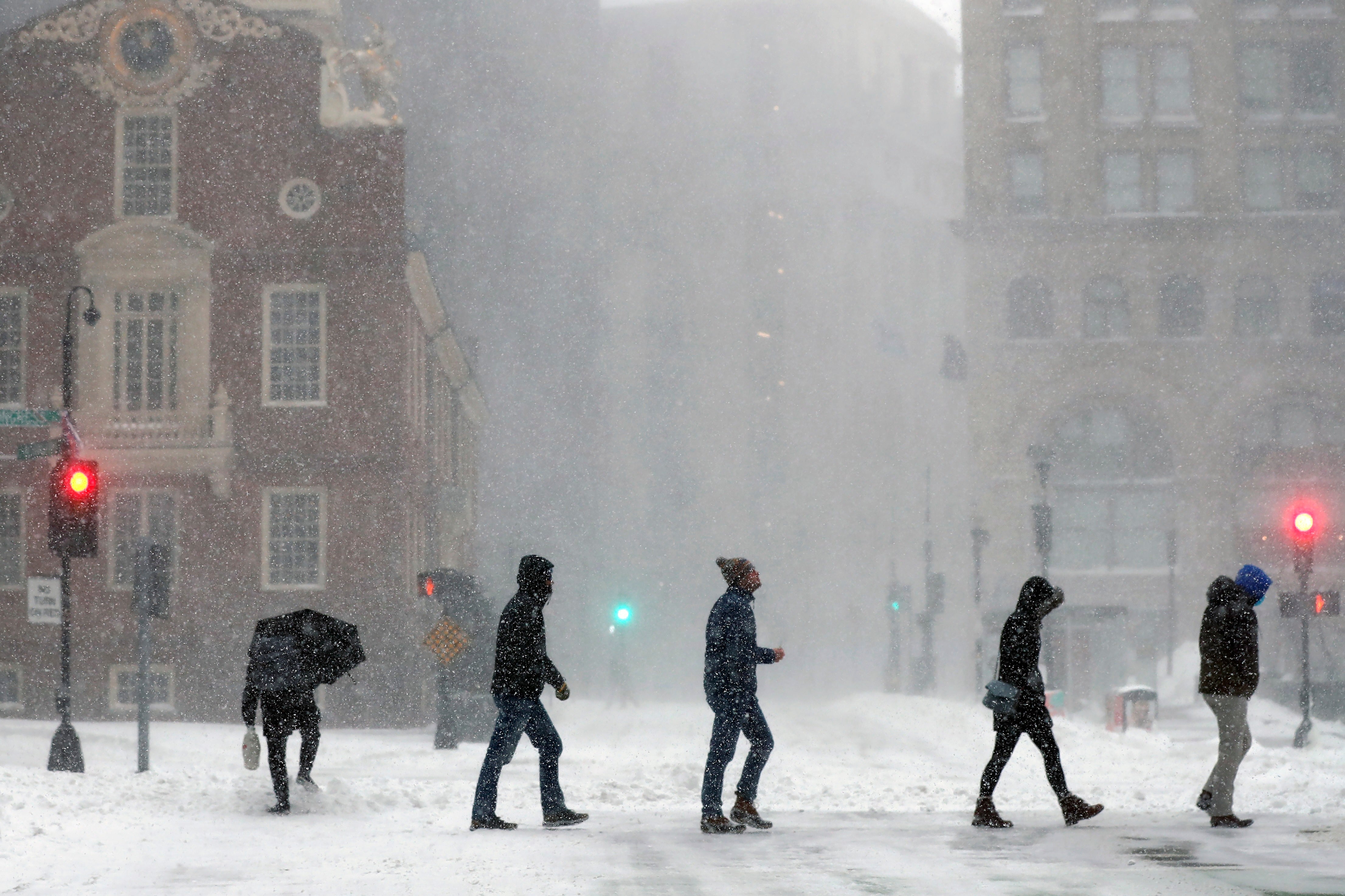After the blizzard, the big chill as East Coast digs out
Gusty winds and falling temperatures have plunged the East Coast into a deep freeze as people dig out from a powerful nor’easter that dumped mounds of snow, flooded coastlines and knocked power out

Your support helps us to tell the story
From reproductive rights to climate change to Big Tech, The Independent is on the ground when the story is developing. Whether it's investigating the financials of Elon Musk's pro-Trump PAC or producing our latest documentary, 'The A Word', which shines a light on the American women fighting for reproductive rights, we know how important it is to parse out the facts from the messaging.
At such a critical moment in US history, we need reporters on the ground. Your donation allows us to keep sending journalists to speak to both sides of the story.
The Independent is trusted by Americans across the entire political spectrum. And unlike many other quality news outlets, we choose not to lock Americans out of our reporting and analysis with paywalls. We believe quality journalism should be available to everyone, paid for by those who can afford it.
Your support makes all the difference.Gusty winds and falling temperatures have plunged the East Coast into a deep freeze as people dig out after a powerful nor'easter dumped mounds of snow, flooded coastlines and knocked out power to tens of thousands.
Dangerous wind chills were expected to fall below zero across the region on Sunday after the storm dumped snow from Virginia to Maine. Philadelphia and New York had plenty of snow, but Massachusetts bore the brunt of the storm, with the town of Sharon getting more than 30 inches (76 centimeters) of snow before the storm moved out.
The wind continued raging as over 100,000 lost power, mostly in Massachusetts, hampering crews' ability to work on overhead lines. No other states reported widespread outages.
Winds gusted as high as 83 mph (134 kph) on Cape Cod in Massachusetts. It scoured the ground bare in some spots and piled the snow into huge drifts in others. Coastal towns flooded, with wind and waves battering North Weymouth, south of Boston flooding streets with a slurry of frigid water, according to video posted on social media. Other videos showed a street underwater on Nantucket and waves crashing against the windows of a building in Plymouth.
Forecasters watched closely for new snowfall records, especially in Boston. The Boston area’s modern snowfall record for a winter storm is 27.6 inches (70 centimeters), set in 2003.
The city tied its record for biggest single-day snowfall on Saturday, with 23.6 inches (60 centimeters), the National Weather Service said.
Boston resident Jesse Ledin owns a home-goods rental business startup. He was out walking his dog in the storm, wearing ski goggles Saturday as he navigated gingerly through huge snow drifts and painful wind gusts.
“It’s pretty intense with the winds getting up to 70 miles (112 kilometers) an hour. As for the depth, it’s pretty deep in spots with the wind and the snow drifts, but it’s pretty nasty out and I definitely wouldn’t want to be driving. So it’s nice to be able to walk through these huge snowdrifts and in pretty tough conditions,” Ledin said.
Climate change, particularly the warming ocean, probably influenced the strength of the storm, atmospheric researchers said.
Much warmer ocean waters “are certainly playing a role in the strengthening of the storm system and increased moisture available for the storm,” said University of Oklahoma meteorology professor Jason Furtado. “But it isn’t the only thing.”
The storm had two saving graces: Dry snow less capable of snapping trees and tearing down power lines, and its timing on a weekend, when schools were closed and few people were commuting.
Parts of 10 states were under blizzard warnings at some point: Maine, New Hampshire, Massachusetts, Rhode Island Connecticut, New York and New Jersey, along with much of the Delmarva Peninsula in Delaware, Maryland and Virginia.
The National Weather Service considers a storm a blizzard if it has snowfall or blowing snow, as well as winds of at least 35 mph (56 kph) that reduce visibility to a quarter-mile or less for at least three hours. In many areas, Saturday’s storm met those criteria.
Rhode Island, all of which was under a blizzard warning, banned all nonemergency road travel.
Hardy New Englanders took the storm in stride.
Dave McGillivray, race director for the Boston Marathon, jokingly invited the public to his suburban Boston home on Saturday for a free snow-shoveling clinic.
“I will provide the driveway and multiple walkways to ensure your training is conducted in the most lifelike situation,” he said.
Washington and Baltimore got some snow but were largely spared. The worst of the nor’easter was expected to blow by Sunday morning into Canada, where several provinces were under warnings.
___
Catalini reported from Morrisville, Pennsylvania. Contributing to this report were Associated Press journalists Rodrique Ngowi in Boston; David Collins in Hartford, Connecticut; Jeff McMillan in Scranton, Pennsylvania; Seth Borenstein in Kensington, Maryland; and Ron Todt in Philadelphia.